

News
The Tesla Semi will shake the trucking industry to its roots
Elon Musk’s new Master Plan calls for an expansion of its vehicles into other categories, including buses and heavy duty trucks, both of which will unveiled in about a year. Undoubtedly, carbon emissions worldwide would fall precipitously if the general automobile consumer transitioned to a tailpipe-free electric Tesla, but that’s not what Elon Musk is after. His goal is a full frontal assault on carbon emissions of all kinds including a Tesla Semi. His objective is for nothing less than a world that no longer uses fossil fuels to power its transportation system, even on a commercial scale.
Looking back at the Volkswagen diesel scandal and why it was significant, beyond morality, diesel engines especially heavy-duty diesel trucks spew emissions on another level. To make the problem worse, passenger cars normally have a useful life of around 200,000 miles. Diesel powered tractors can be on the road for a decade or more, spewing out toxins for millions of miles before they are replaced. The pollution control systems on older trucks are rudimentary at best.
In Southern California, the pollution from drayage trucks that haul shipping containers from ports to inland distribution centers is so bad, it has sparked a number of plans to replace them with electric versions. One solution proposed by Siemens calls for equipping trucks with pantographs so they can draw electricity from overhead wires along their routes.
Former Tesla executive Ian Wright sold his stock in Tesla Motors when Elon Musk came on board. Wright wanted to attack the challenges of truck pollution rather than build some silly sports car. He has since created his own company called Wrightspeed that focuses on cleaning up the emissions from heavy duty garbage trucks. He has invented a new form of hybrid powertrain that uses a small gas turbine to recharge the batteries. The turbine is so clean, it doesn’t even need a catalytic converter to meet California’s stringent emissions rules.
The problem with electric trucks today is that the batteries need to be so large and heavy they would take up much of the space available for hauling freight. Not only that, they would be prohibitively expensive. The Wrightspeed system is a compromise that attempts to strike a balance between cost and range. It has attracted international attention and the company has recently signed a contract to re-power a fleet of diesel buses in New Zealand.
The allure of electric trucks has created an opportunity for hucksters and charlatans. Earlier this year, a Florida company calling itself Oakridge Global Energy Solutions said it had developed a battery for Freedom Trucking of Minneapolis that would haul an 80,000 lb. load 400 miles. That claim turned out to be vaporware.
Another entrant into the heavy truck sweepstakes is a company calling itself Nikola Motors — a rather obvious attempt to somehow conflate what it is doing with the work of Tesla Motors. It says its Nikola One tractor will have 2,000 horsepower. 3,700 lb-ft of torque, a 325 kWh battery, 6 wheel drive with torque vectoring and 1,200 miles of range. It relies on an onboard natural gas turbine to keep the battery charged while driving.
The design concept for the Nikola One is visually appealing and the company says it has 7,000 pre-orders for the truck worth a total of $2.3 billion. Of course, it currently has no factory, no battery factory, and little corporate infrastructure other than its website.
We can assume the Tesla Semi will not have a range extender engine of any type. How Tesla will make an electric tractor that can haul heavy loads long distances that is cost competitive remains unclear. But if Elon says that’s what Tesla will do, we can be pretty sure it will — eventually.
JB Straubel says he and Elon talked about electric airplanes long before they decided to build automobiles. And ocean going cargo vessels are some of the worst polluters on the face of the planet. Musk probably has a plan for them, too. Look for those ideas to be part of Master Plan Numero Tres.

Elon Musk
Tesla stock woes are ‘overblown’ considering long-term catalysts: analyst
“We believe the recent stock pullback and sales declines, while significant, are overblown considering the near-term issues impacting the company and the scope of opportunities around the corner.”
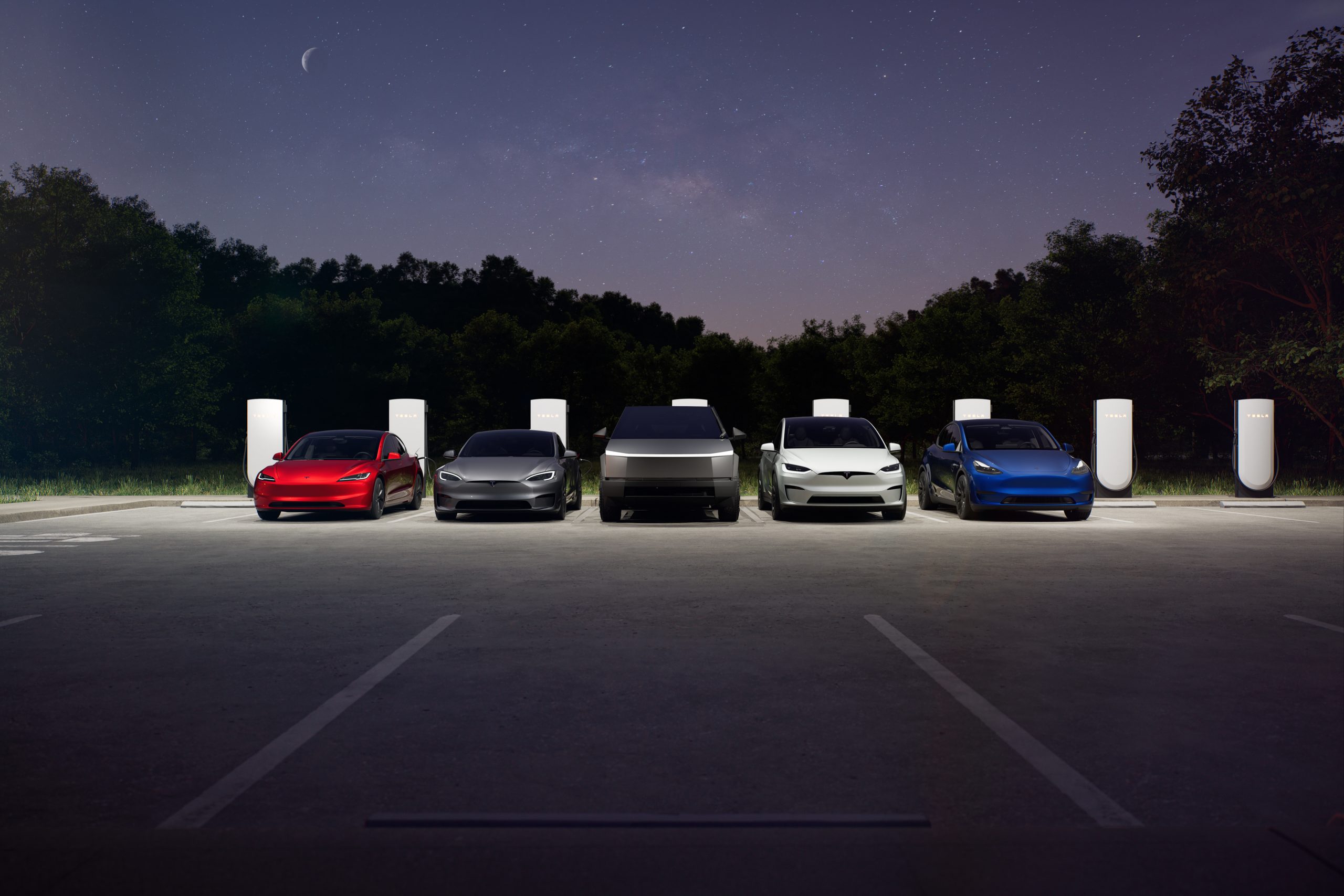
Tesla stock (NASDAQ: TSLA) has been under tremendous pressure as a result of CEO Elon Musk’s involvement in the United States Government and other factors, like tariffs and lower-than-expected delivery figures.
However, one analyst says that the concerns regarding Tesla’s short-term performance are “overblown”, considering all the things the company has in the works for the future.
Mickey Legg, an analyst for Benchmark, wrote in a note on Wednesday that much of the negative narrative that has hovered over Tesla shares for the past few months is exaggerated. Instead of looking at the near-term pullback on shares that has seen a 32 percent drop in share price since the beginning of the year, Legg is encouraging investors to look at the catalysts that lie ahead.
Legg wrote in the note to investors (via MarketWatch):
“We believe the recent stock pullback and sales declines, while significant, are overblown considering the near-term issues impacting the company and the scope of opportunities around the corner. After appreciating over 90% to a high of $488 after the Presidential election, the stock has pulled back to sub-$300 levels.”
The stock has felt immense pressure in the early portion of 2025, especially as some investors are questioning Musk’s focus on Tesla, with some arguing that his CEO role has seemingly taken a backseat to his responsibilities with the Department of Government Efficiency (DOGE).
Additionally, his capacity in the government has drawn some unwarranted criticism from some, resulting in vandalism and violence from his opposition.
However, Musk’s role with DOGE will eventually come to a close, and Legg is looking forward to that, as well as other catalysts that Tesla has announced in the past. For example, the company said it plans to launch affordable models in the first half of this year:
“Our focus is on the release of a new TSLA model in 2Q25, which in our view could turn around the recent decline in vehicle sales. Furthermore, we’re cautiously optimistic about the rollout of Tesla operated robotaxis as a paid service in Austin, TX scheduled for June. While the scope of the initial rollout is expected to be limited, we are focused on the rate of expansion of the operation both in Austin and to other cities.”
Legg finished by stating that he is under the impression that a reduced capacity in DOGE by Musk would be massive for the stock:
“Recent headlines suggest Musk could be reducing his role with the White House, and we can see political backlash diminishing as the year progresses. In our view there is significant potential for a stock rebound, and we believe the breadth of near-term opportunities outweigh headwinds.”
Tesla shares are up over 20 percent as of 3:22 p.m. on the East Coast.
News
Destroying Tesla stores partially acceptable, says nearly 40% of U.S. study’s respondents
It appears that a growing number of people are willing to justify or even applaud the idea of killing people like Elon Musk or Donald Trump.

A study from the Network Contagion Research Institute (NCRI) has revealed a rather disturbing trend in the United States. Based on the study, it appears that a growing number of people are willing to justify or even applaud the idea of killing people like Elon Musk or Donald Trump. A notable number of the study’s respondents also stated that they find it partially acceptable to destroy Tesla stores as a form of protest.
The NCRI Study
The NCRI’s study was initiated to determine people’s support for political violence. As per the organization, calls for political violence towards people like Trump and Musk are becoming increasingly normalized. The same is true for property destruction, such as the firebombing of Tesla stores and Superchargers and the vandalism of consumer vehicles.
For its study, the NCRI surveyed 1,264 U.S. residents, balanced to reflect census data on race/ethnicity, gender, age, and education. Respondents were then asked demographic information, political identity, several political and psychological scales, and questions concerning their acceptance of specific forms of political violence.

Musk, Tesla, and Trump
Some troubling trends emerged from the study, including the fact that 57.6% of respondents who self-identified as left of center stated that destroying Tesla dealerships is partially acceptable. Even more disturbing was the fact that 48.6% of respondents who self-identified as left of center reported that if someone murdered Elon Musk, they would at least be somewhat justified. For U.S. President Donald Trump, this number was higher at 55.2%.
Without isolating respondents who self-identified as left of center, 39.8% of the study’s respondents still stated that destroying Tesla stores is partially acceptable, 31.6% still stated that killing Elon Musk was somewhat justified, and 38.5% still stated that killing Donald Trump was somewhat justified.
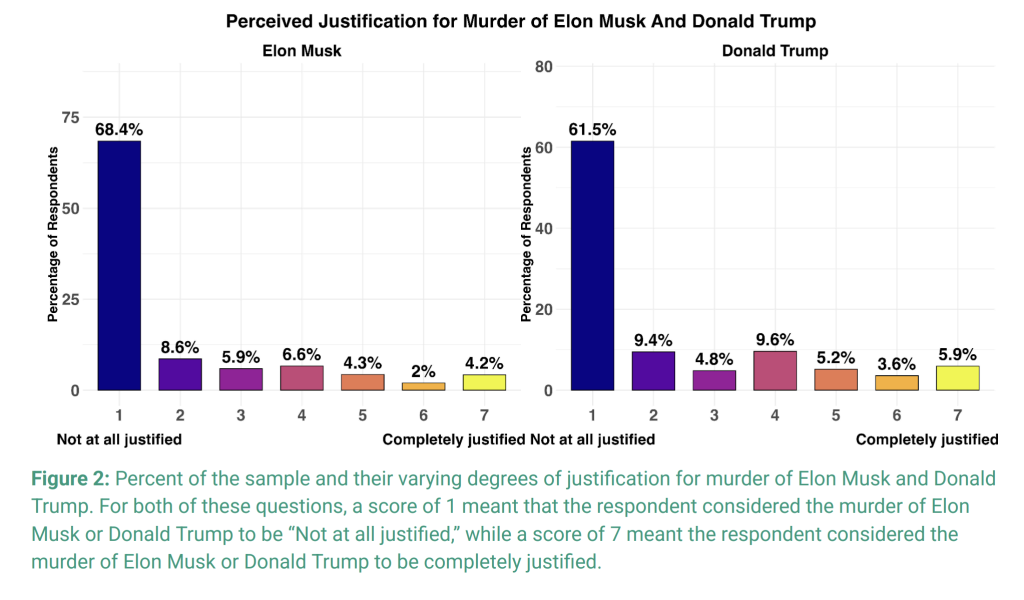
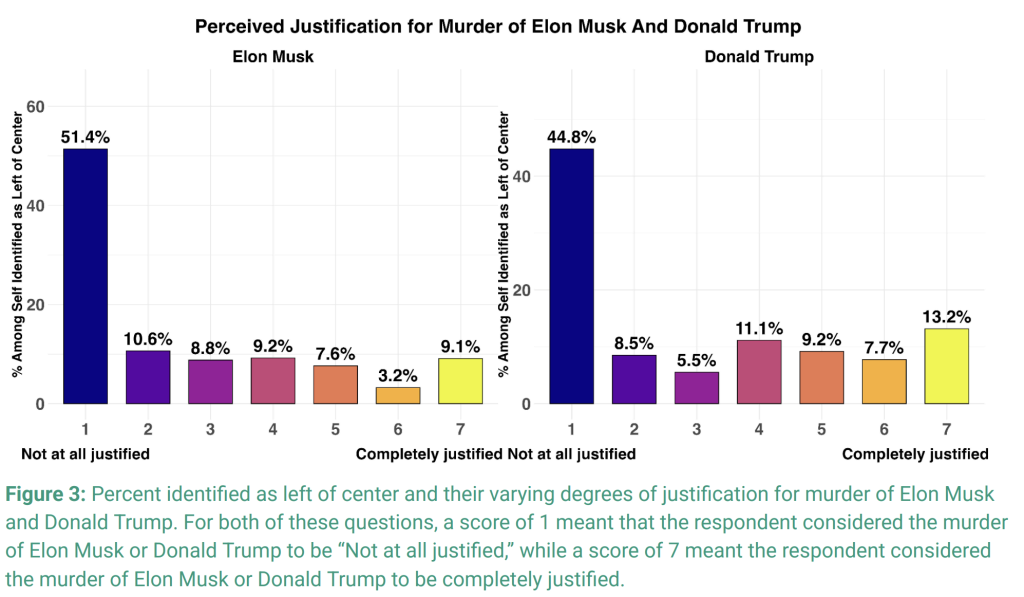
What the NCRI Says
Joel Finkelstein, the lead author of the NCRI’s study, stated that an “assassination culture” of sorts is emerging, especially following the death of UnitedHealthcare CEO Brian Thompson in the hands of Luigi Mangione in December 2024. As could be seen in social media activity of people against Musk or Trump, calls for the assassination of the CEO and President are abounding among their harshest critics.
“What was formerly taboo culturally has become acceptable. We are seeing a clear shift – glorification, increased attempts, and changing norms – all converging into what we define as ‘assassination culture.’ It’s not just Luigi anymore. We’re seeing an expansion: Trump, Musk and others are now being openly discussed as legitimate targets, often cloaked in meme culture and gamified online dialogue,” Finkelstein stated.
Below is a video about the NCRI’s study.
And below is the NCRI’s study itself.
NCRI Assassination Culture Brief by Simon Alvarez on Scribd
Elon Musk
Tesla CEO Elon Musk and fmr VP candidate Tim Walz continue war of words
Elon Musk and Tim Walz continue trading barbs as the former VP candidate called the Tesla CEO a “greedy bastard.”

Tesla CEO Elon Musk and former Vice Presidential candidate Tim Walz are continuing their war of words against one another as the Minnesota politician made more comments last evening.
Musk then responded to those comments today in a post on X.
Walz said last night that Musk is a “greedy bastard” who did not pay taxes after he became successful. The former VP hopeful also said that “people like Elon Musk” should be demonized:
“Once you become successful, don’t be a greedy bastard and not pay your taxes. I don’t think we should be the party that demonizes someone because they can afford something—they worked hard & got something. We should demonize people like Elon Musk. That’s different.”
Tim Walz on Elon Musk: “Once you become successful, don’t be a greedy bastard and not pay your taxes. I don’t think we should be the party that demonizes someone because they can afford something—they worked hard & got something. We should demonize people like Elon Musk. That’s… pic.twitter.com/uq5aV2XAxT
— Sawyer Merritt (@SawyerMerritt) April 9, 2025
These comments from Walz follow previous statements he made about Tesla stock, stating that when it goes down, he gets a boost. These comments were met with criticism from people in various sectors, including Shark Tank’s Kevin O’Leary, who is nicknamed “Mr. Wonderful.”
O’Leary called Walz out for hoping Tesla shares drop as they are a holding in the Minnesota Pension Fund. Walz said the comments were just a joke.
Musk chose to respond to Walz’s comments from last night this morning in a response to the above X post, calling him “a liar”:
Tim Walz is a liar
— Elon Musk (@elonmusk) April 9, 2025
Funny enough, Musk has not avoided paying his taxes. In fact, in 2021, he paid the largest single-year tax bill in American history, as he wrote a cheque to the IRS for $11 billion:
Elon Musk’s 2021 taxes equates to over $1.5 million for every day he’s been a US citizen
It is unclear why Walz continues to speak negatively about Musk, especially as it seems he is going out of his way to do so. More than likely, it is to continue pushback against Musk’s involvement with the Trump Administration.
-
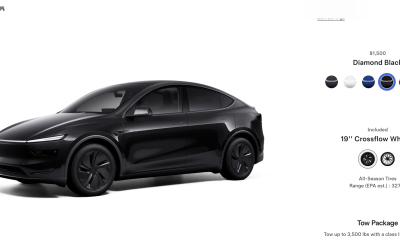
 News6 days ago
News6 days agoTesla rolls out new, more affordable trim of the Model Y Juniper in U.S.
-

 News1 week ago
News1 week agoTesla shares Optimus’ improved walk in new update video
-
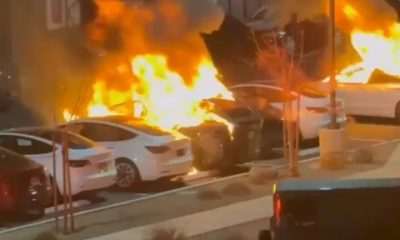
 Elon Musk2 weeks ago
Elon Musk2 weeks agoTesla vandal who lit Las Vegas repair center on fire arrested
-

 Elon Musk2 weeks ago
Elon Musk2 weeks agoElon Musk clarifies Trump tariff effect on Tesla: “The cost impact is not trivial”
-

 News2 weeks ago
News2 weeks agoTesla US Gigafactories shields from Trump’s 25% Tariffs
-
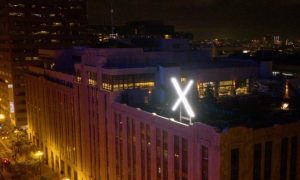
 Elon Musk2 weeks ago
Elon Musk2 weeks agoMusk says xAI has acquired X in $33 billion stock deal
-
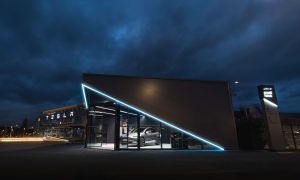
 Elon Musk7 days ago
Elon Musk7 days agoTesla Germany reports 4,935 units sold in Q1 2025
-
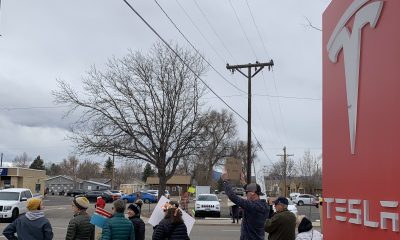
 Elon Musk2 weeks ago
Elon Musk2 weeks agoTesla vehicles hit by ATV, suspect caught by Sentry Mode







